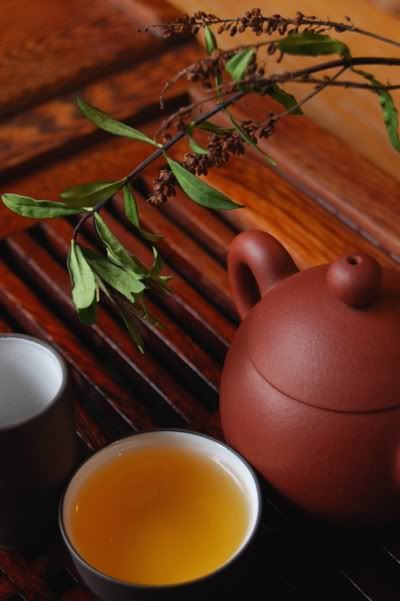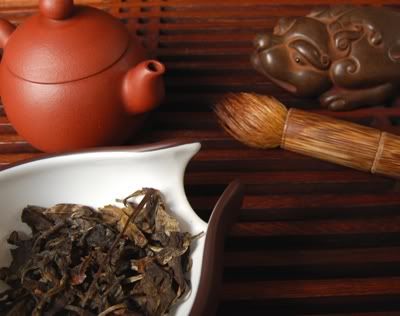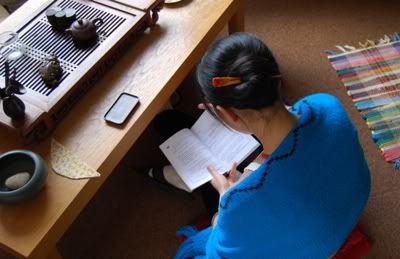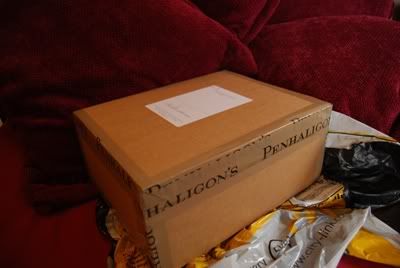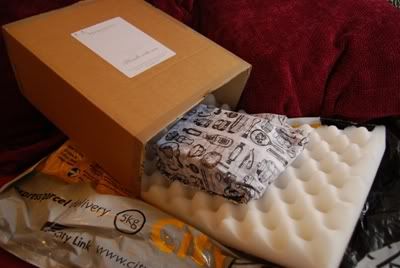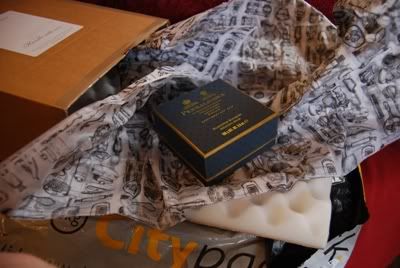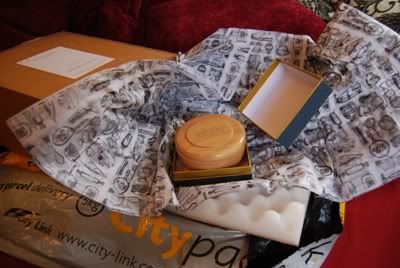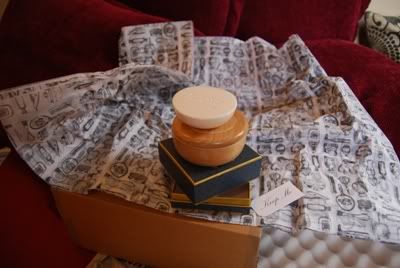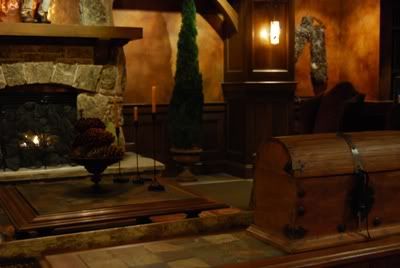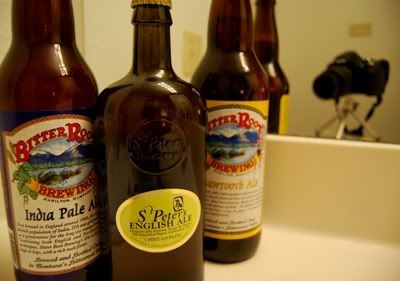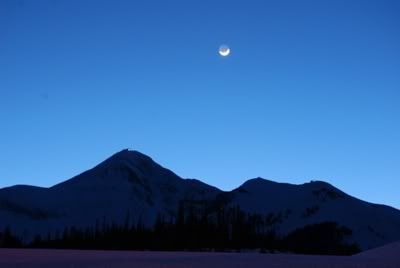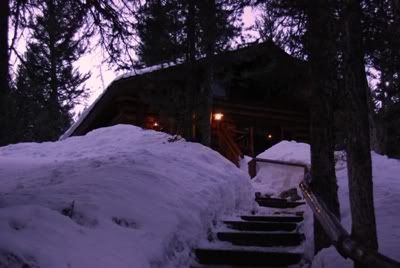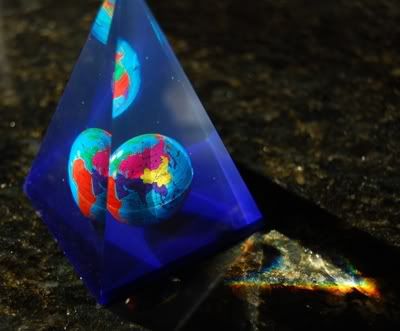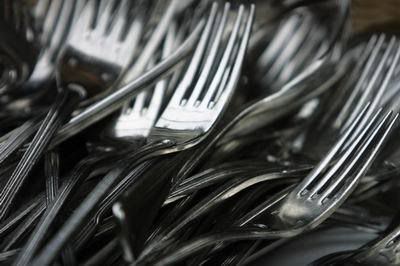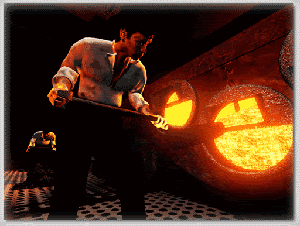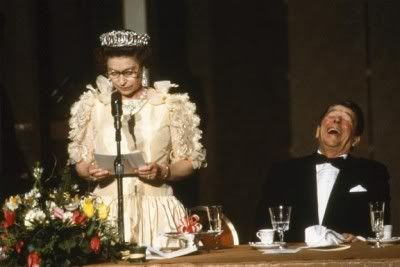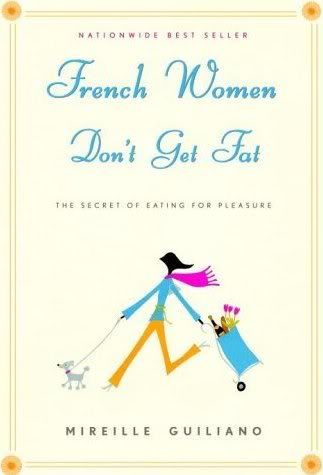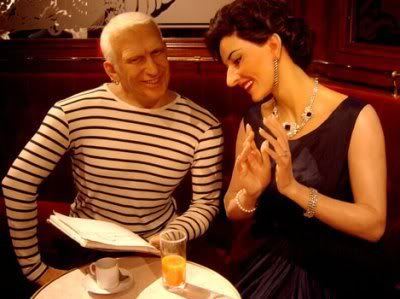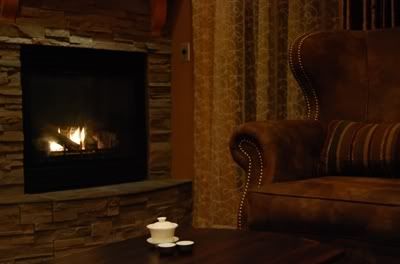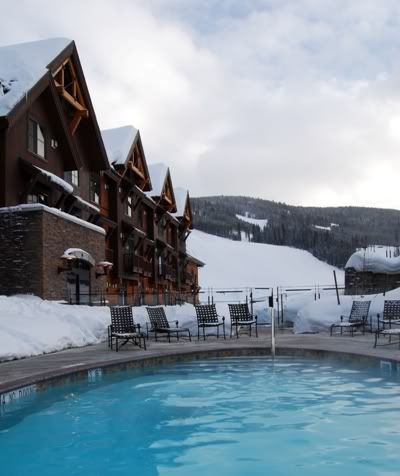Dark skies. Howling winds. The kind of day to stay indoors.
Join us at the tea-table with fitting music from Agalloch ()
Join us at the tea-table with fitting music from Agalloch ()

The subject of this article is "maturity", which will come in three varieties.
1. Blog Maturity
Back in the day (Apologia Pro Vita Sua), I laid out my intentions for this humble site:
However, today was the first time (iii) that I have used the Half-Dipper as a resource for investigating the maturing of tea. As old notes prove to have a second round of value, maybe this indicates some level of blogly maturity.
While torrential rain threatened to penetrate the windows, we revisited the 2006 Xizihao "Banzhang" and compared its progress to the earlier notes. I have added the extra tasting notes to the original post as an addendum, so do please click on the above link if this interests you. In future, I will try to do the same as we revisit teas to check on their progress.

2. Tea Maturity
Today's experiment was particularly interesting, as our brewing configuration is almost identical to that which was used for the original notes. The kettle, teapot, water, and methodology all remain constant - but the tea has changed.
What was originally green and brusque has been "caught in the act" of changing: the green flavours are moving lower, and changing into a rich tobacco. This was previously almost entirely absent, with just some lighter "mushroom" tones. Regular readers will recall my shameless love of tobacco-flavoured tea, so this excites me.
The brutal astringency is rapidly vanishing - it was conspicuous in its absence, given my clear memory of its original potency. Also, the colour of the leaves is darker - much moreso than I would expect.
Perhaps the most surprising of all changes is that this tea has become much more complex. I originally noted its simplicity - it was green, bitter, with mushroom. Drinking today's tea caused Lei to say, "This has so much flavour - it's like a proper cheese." High praise indeed, if you know my dear wife's appreciation for cheese.
So how has this maturing occurred? I put it down to the climate. It is an oft-repeated axiom that if atmosphere is good for people, then it is good for tea. Recently travelling to a much drier climate allowed some clearer understanding of what we have in England.
While in Montana, I noted the extreme lack of humidity and that it could be poor for tea-storage. My hands and hair were dried and cracked. My skin actually felt more fragile - the slightest knock would tear my skin. Being a clumsy type, constantly banging my hands and legs against inanimate objects, I soon had an inordinate number of scrapes, bruises, and cuts sustained simply by rebounding off the furniture.
Returning home, my skin has returned to normal - the dry, rough patches have smoothed and become pink once again, the cuts have all healed, and my hair no longer feels like straw. I continue to bounce off inanimate objects, but the skin does not tear as it did when in the drier climate.
This must be beneficial for tea. I remember travelling back home along English roads, with Lei commenting on how wet the air seemed here. I don't take too many pains over the storage of our pu'er: it squats on shelving units in my study (and the aroma is fine to work in), so I conclude that it must be the atmosphere. I hadn't accounted for just how rapid the aging could be, though.

3. Tasting Maturity
Today's revisiting allows me to look back at the manner in which I assessed tea even a year ago, and it shows me the changes in myself.
I firmly believe that much of what we take to be "expertise" is simply the product of familiarity, in any sphere (not discounting any innate ability with which one might be blessed). While far from being an expert in tea, it is interesting to see that simple exposure to tea has matured my own clumsy perceptions of it.
Complexities in teas that I could not observe before have become apparent: chaqi is more obvious; the "effervescent" quality of some leaves on the lips and tongue is more evident; the composition of a tea becomes more clear.
In technique, I still brew "bad" brews. However, their number is decreasing - it seems to be better, more often. This isn't skill, or talent - just the sheer effect of time.
I am reminded of the Japanese approach to learning various manual and spiritual arts through exceptionally large amounts of repetition (and think of Herrigel's Zen and the Art of Archery).
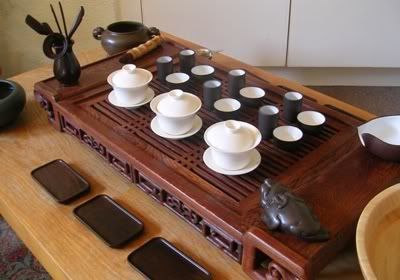
So, three maturities. Here's hoping for more of the same.
1. Blog Maturity
Back in the day (Apologia Pro Vita Sua), I laid out my intentions for this humble site:
i) a repository of notes;Tea-notes (i) we have in plentiful supply, allowing me to correlate the contents of my paper journals. Similarly, (ii) the site has been blessed with a wise and humourous readership (that's you), and many "real life" meetings and friendships have sprung out of it.
ii) a place to share comments with friends old and new; and
iii) a resource for like-minded teafolk (however inadequate it might be).
However, today was the first time (iii) that I have used the Half-Dipper as a resource for investigating the maturing of tea. As old notes prove to have a second round of value, maybe this indicates some level of blogly maturity.
While torrential rain threatened to penetrate the windows, we revisited the 2006 Xizihao "Banzhang" and compared its progress to the earlier notes. I have added the extra tasting notes to the original post as an addendum, so do please click on the above link if this interests you. In future, I will try to do the same as we revisit teas to check on their progress.

2. Tea Maturity
Today's experiment was particularly interesting, as our brewing configuration is almost identical to that which was used for the original notes. The kettle, teapot, water, and methodology all remain constant - but the tea has changed.
What was originally green and brusque has been "caught in the act" of changing: the green flavours are moving lower, and changing into a rich tobacco. This was previously almost entirely absent, with just some lighter "mushroom" tones. Regular readers will recall my shameless love of tobacco-flavoured tea, so this excites me.
The brutal astringency is rapidly vanishing - it was conspicuous in its absence, given my clear memory of its original potency. Also, the colour of the leaves is darker - much moreso than I would expect.
Perhaps the most surprising of all changes is that this tea has become much more complex. I originally noted its simplicity - it was green, bitter, with mushroom. Drinking today's tea caused Lei to say, "This has so much flavour - it's like a proper cheese." High praise indeed, if you know my dear wife's appreciation for cheese.
So how has this maturing occurred? I put it down to the climate. It is an oft-repeated axiom that if atmosphere is good for people, then it is good for tea. Recently travelling to a much drier climate allowed some clearer understanding of what we have in England.
While in Montana, I noted the extreme lack of humidity and that it could be poor for tea-storage. My hands and hair were dried and cracked. My skin actually felt more fragile - the slightest knock would tear my skin. Being a clumsy type, constantly banging my hands and legs against inanimate objects, I soon had an inordinate number of scrapes, bruises, and cuts sustained simply by rebounding off the furniture.
Returning home, my skin has returned to normal - the dry, rough patches have smoothed and become pink once again, the cuts have all healed, and my hair no longer feels like straw. I continue to bounce off inanimate objects, but the skin does not tear as it did when in the drier climate.
This must be beneficial for tea. I remember travelling back home along English roads, with Lei commenting on how wet the air seemed here. I don't take too many pains over the storage of our pu'er: it squats on shelving units in my study (and the aroma is fine to work in), so I conclude that it must be the atmosphere. I hadn't accounted for just how rapid the aging could be, though.

3. Tasting Maturity
Today's revisiting allows me to look back at the manner in which I assessed tea even a year ago, and it shows me the changes in myself.
I firmly believe that much of what we take to be "expertise" is simply the product of familiarity, in any sphere (not discounting any innate ability with which one might be blessed). While far from being an expert in tea, it is interesting to see that simple exposure to tea has matured my own clumsy perceptions of it.
Complexities in teas that I could not observe before have become apparent: chaqi is more obvious; the "effervescent" quality of some leaves on the lips and tongue is more evident; the composition of a tea becomes more clear.
In technique, I still brew "bad" brews. However, their number is decreasing - it seems to be better, more often. This isn't skill, or talent - just the sheer effect of time.
I am reminded of the Japanese approach to learning various manual and spiritual arts through exceptionally large amounts of repetition (and think of Herrigel's Zen and the Art of Archery).

So, three maturities. Here's hoping for more of the same.


